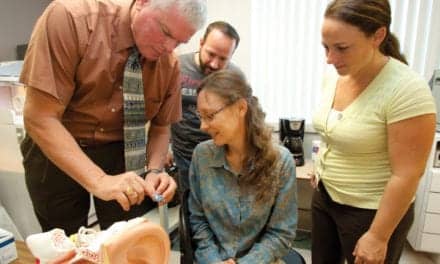Letters | March 2018 Hearing Review
Dear Editor:
We have read with interest the diverse articles in The Hearing Review that have looked at a range of issues and viewpoints concerning over-the-counter (OTC) and direct-to-consumer (DTC) hearing aids.1-10 After enjoying the holidays, the first author (GG) recalled an interesting conversation at a social event. We think this may sound familiar to you.
One of the guests knew Garry was an audiologist, and told him that he had recently been investigating the purchase of hearing aids. He also mentioned that he had been doing his homework by visiting an independent clinic in addition to Costco, Sam’s Club, and even Cabela’s, as well as the Internet. Near the end of the conversation, he said, “You know, I am beginning the think the market for hearing aids is much like the wine industry!” Of course, Garry asked, “How so?”
“Well let me tell you,” the man explained. “Consumers see numerous vintages and flavors ranging in price from $10 per bottle to several thousands of dollars per bottle. In most (not all) cases, the marketing hype behind the more-expensive bottles suggests notable differences in taste and quality between the expensive and less-expensive bottles.
“For example,” he said, “I took an empty bottle from an expensive vintage (over $500) and refilled it with a much less-expensive wine, and nobody really knew the difference while believing it was ‘the best.’ The result was the less-expensive wine provided the same outcome as the more-expensive wine.
“When I visit the different options for purchasing hearing aids, I see a similar situation,” he continued. “Their message is ‘Buy from me; I am a professionally trained and certified provider. My costs may be higher, but I provide better service in addition to proper fit.’ The big-box store basically said the same, but their prices were far more competitive, and you also get a substantial rebate at the end of the year for using their credit card services. And finally, with the Internet, I see numerous advertisements for new OTC hearing aids or Personal Sound Amplification Products (PSAPs) at a fraction of the cost. And with many of the Internet promotions, they declare their devices are backed by MDs or audiologists and often claim that it is the product of new advanced technology. Really? Why would you want to pay $2,000 or more when you can get quality hearing benefits for less than $200-$300 per ear?
“Also read the online testimonies,” he added. “There are hundreds of people saying these hearing aids sound better than my previously purchased hearing aids which cost a bundle. And if a customer is not happy with the final results there are no issues getting a full refund within 30-60 days.”
Bottom line: Many of the apparent differences this person cited were basically surrounded by marketing dialog, while the final outcome was a happy customer with a product that works and was more affordable. Need we say more? It worked and the customer was happy.
Does this conversation ring a bell? We have spoken to many friends, relatives, and colleagues who report the same or similar discussions. Our conclusion is that we are witnessing the need for our industry and professions to focus more on marketing and pricing efforts, and finally realize that there are changes going on that permit consumers to purchase quality products at different price points.
When it comes to hearing aids, many potential customers will choose the product that works well—or at least “okay”—for the least amount of expense.8 Like one of our clients said, “I know you’re an audiologist, but I feel I have done my homework and I don’t hear a $2,000 difference.” Another went to a dispenser in a chain office and was quoted a discounted price of $4,500. He was told there are no miracles when it comes to hearing loss and this manufacturing company was a well-known, successful, well-established hearing aid developer. The client’s response was, “You are incorrect. If I spend $4,500 on these units that will be a miracle.”
Current marketing conditions are changing, and not everyone will need a Rolls Royce if a Ford or Chevrolet will do. Both hearing aid manufacturers and the various professional delivery channels need to recognize and acknowledge these changes. Additionally, new federal regulations will be opening doors for consumers to get access to better hearing at more affordable prices.
Manufacturing companies and/or provider networks with staff or officers who don’t understand these conditions risk the chance of losing out on a fantastic opportunity. Our belief is if the Internet companies, in addition to the big-box stores, are selling well over 10,000+ units per month to their clients who are happy, then these clients will not be easily persuaded to enter into the traditional professional dispensing channel.
For the past five years, during our attendance at numerous consumer trade shows, we have begun to see a lot more companies build hearing-related products, and these companies are seeking new customers and new delivery systems for marketing these products. It’s up to us—as an industry, as business managers, and as professionals—to respond appropriately and proactively.
— Garry Gordon, MS, Del Hawk, AuD, and Michael J. Metz, PhD
References
-
Kochkin S. A comparison of consumer satisfaction, subjective benefit, and quality of life changes associated with traditional and direct-mail hearing aid use. Hearing Review. 2014;21(1):16-26.
-
Smith C, Wilber LA, Cavitt K. PSAPs vs hearing aids: An electroacoustic analysis of performance and fitting capabilities. Hearing Review. 2016;23(7):18.
-
Humes LE, Herring C, Kinney DL, Main AK, Quigley TM, Rogers SE. The effectiveness of two service-delivery models in older adults: A randomized double-blind, placebo-controlled clinical trial. Hearing Review. 2017;24(5);12-19.
-
Tecca JE. A perspective on the Indiana University OTC outcome study. Hearing Review. 2017;24(7):18-24.
-
Tedeschi TJ, Kihm J. Implications of an over-the-counter approach to hearing health care: A consumer study. Hearing Review. 2017;24(3);14-22.
-
Amlani AM, Hosford-Dunn H. How do we increase hearing aid adoption rates? Hearing Review. 2016;23(10):10-11.
-
Amlani A, Taylor B, Levy C, Robbins R. Utility of smartphone-based hearing aid applications as a substitute to traditional hearing aids. Hearing Review. 2013;12:16-23.
-
Taylor B. The ‘good enough’ era and hearing healthcare. Hearing Review. 2015;22(5):10.
-
Killion MC. Myths about hearing aid benefit and satisfaction. Hearing Review. 2004;11(9):14-66.
-
Godinho L. What Is the most efficient reimbursement system in Europe? Hearing Review. 2016;23(1):16.
Citation for this article: Gordon G, Hawk D, Metz MJ. Hearing aids and wines. Hearing Review. 2018;25(3):42.
Image: | Dreamstime.com






To connect to the wine and blind-tasting analogy – the mythical Paris tasting of 1976 ( https://en.wikipedia.org/wiki/Judgment_of_Paris_(wine) ) put on the head the assumptions about the superiority of premium Bordeaux and indicated the turn in the taste of the era. In any case, the shocking results not only promoted Californian Cabernets but helped rejuvenate the worldwide wine industry (including Bordeaux), increased the overall quality of products and in the end benefited the consumers.
While I believe that, concerning sound quality, premium hearing aids by “big 6” are still a notch above the others, their distribution and fitting procedures are ripe to experience their own Paris tasting moment – to the benefit of current and future users.